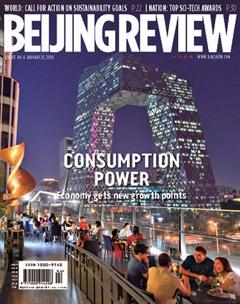Journey of Joy
As always, the Spring Festival, or the Chinese New Year, which falls on January 25 this year, is heralded by a travel rush, known as the largest human migration on Earth.
During the 40-day period from January 10 to February 18, 3 billion trips are expected to be made, according to Zhao Chenxi, a spokesperson for the National Development and Reform Commission.
Chinas transportation network has improved year by year, making holiday travel much easier, Zhao said. In 2019, 8,489 km of new railways were put into operation, including 5,474 km of high-speed lines. In addition, some 330,000 km of repaired and expanded highways opened to traffi c.
This year, for almost all high-speed and inter-city trains, passengers can check in with their ID rather than a paper ticket, Vice General Manager of China State Railway Group Li Wenxin said. In some railway stations and airports, they can check in through face recognition.
The civil aviation passenger traffi c volume is expected to reach a record high of 79 million, an increase of 8.4 percent over 2019. The most popular domestic destinations for airline travelers are Beijing, Shanghai, Guangzhou and Shenzhen cities, Hainan Province, and southwest and northeast regions, Wan Xiangdong, chief pilot of the Civil Aviation Administration of China, said. Neighboring countries such as Japan, the Republic of Korea, Thailand, Viet Nam, Malaysia and the Philippines are expected to be the top international destinations, he added.
In addition to railways and airlines, more than 790,000 buses and 19,000 ships are available to ferry passengers to their destinations, Wang Yang, chief engineer of the Ministry of Transport, said.
An increasing number of people are traveling by their own car during the Spring Festival holiday. Private car ownership in China increased 9.5 percent to 207 million in 2019, according to offi cial statistics.




